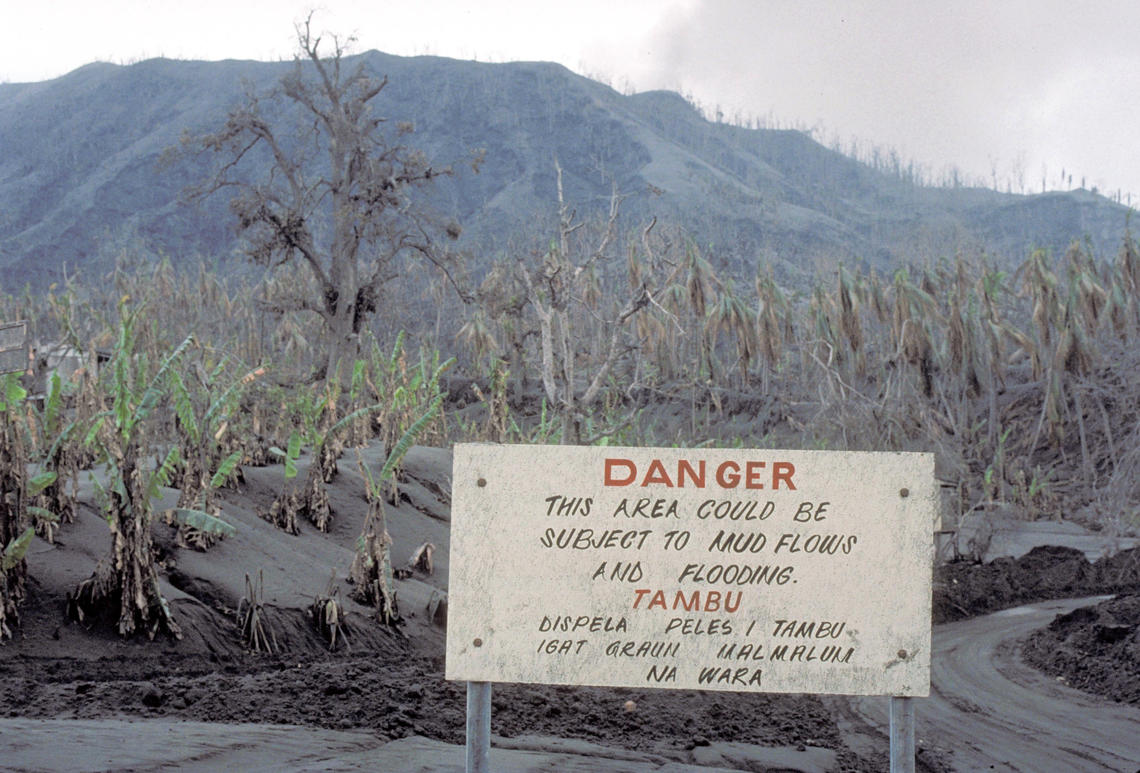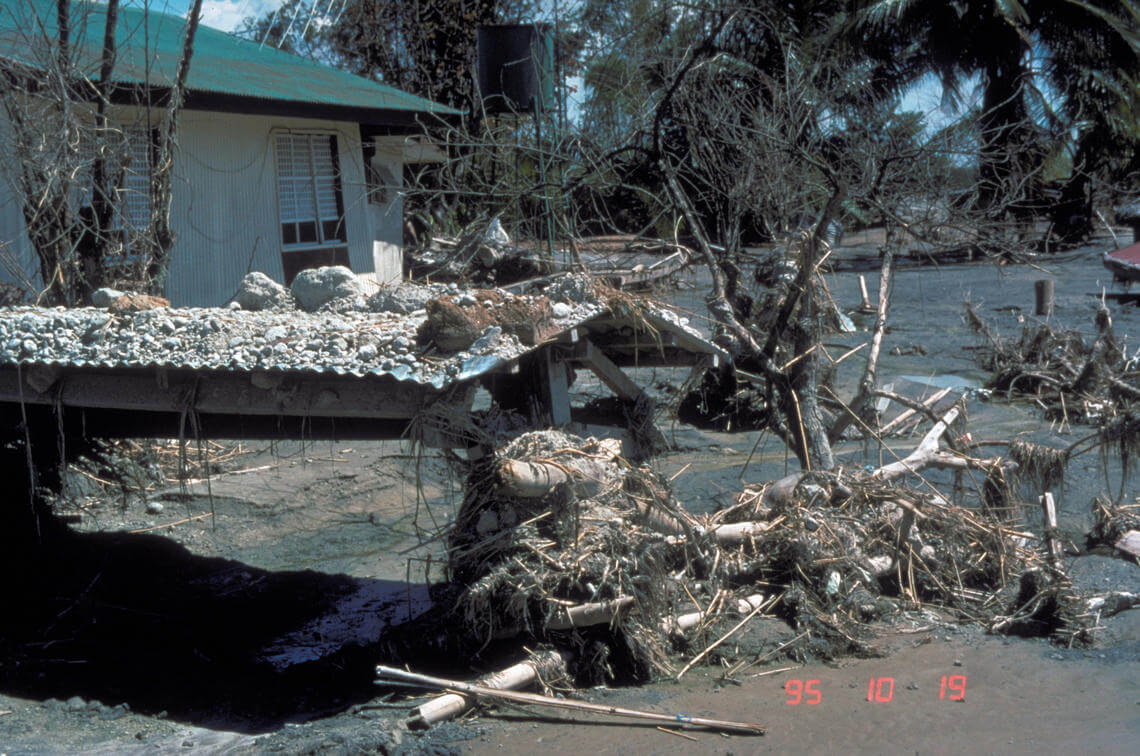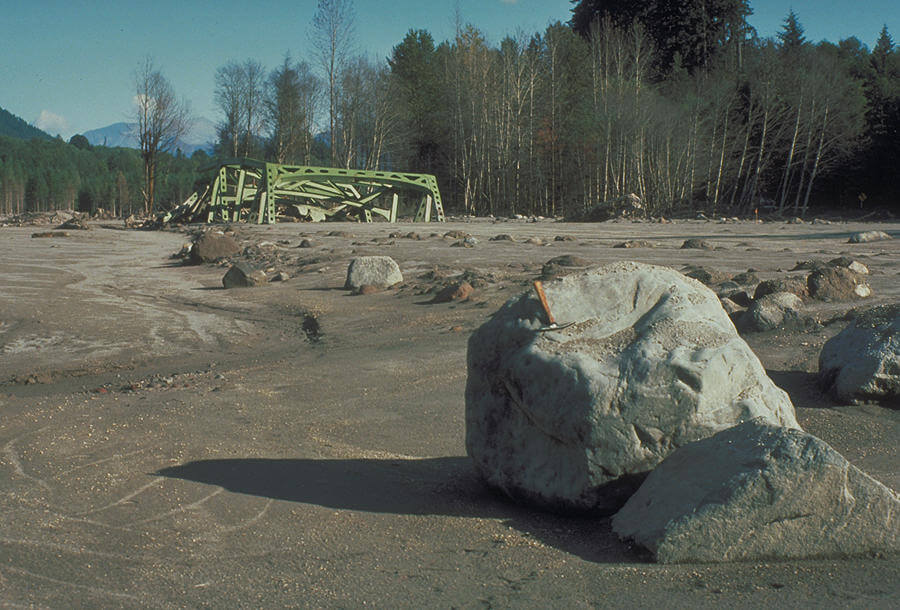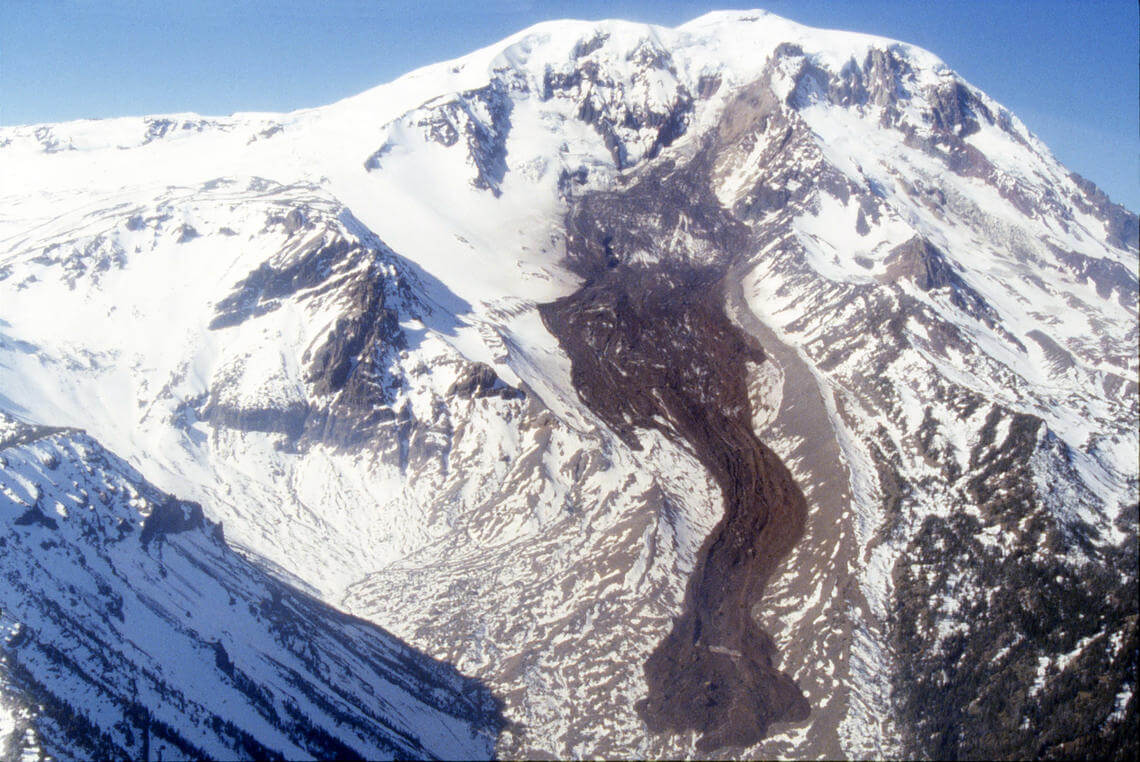BUILDING RISK KNOWLEDGE
WHY THE FOUNDATION WAS BORN? >
WHY THE FOUNDATION WAS BORN? >
DISASTERS ARE NOT NATURAL, they are socially built, due to lack of preparation, prevention, mitigation work, education and monitoring. They are natural risks or hazards that impact vulnerable societies. Knowledge help reducing social and structural vulnerability in order to have more resilient societies!
Lahar is an Indonesian term that describes a hot or cold mixture of water and rock fragments that flows down the slopes of a volcano and typically enters a river valley. Small seasonal events are sometimes referred to as “debris flows”, especially in the Cascades. Lahars generally occur on or near stratovolcanoes, such as those of the Aleutian volcanic arc in Alaska and the Cascade Range in the Western U.S.
A moving lahar looks like a roiling slurry of wet concrete, and as it rushes downstream, the size, speed, and amount of material carried can constantly change. The initial flow may be relatively small, but a lahar may grow in volume as it entrains and incorporates anything in its path – rocks, soil, vegetation, and even buildings and bridges. The flowing slurry may consume additional water through melting of snow and ice or by engulfing river or lake water. Voluminous lahars commonly grow to more than 10 times their initial size as they move downslope. In steep areas, lahars can exceed speeds of 200 km/hr (120 mi/hr), but as they move farther away from a volcano and decelerate in lowland areas, they eventually begin to deposit some of the load and decrease in size.
Eruptions may trigger lahars by melting snow and ice or by ejecting water from a crater lake. Pyroclastic flows can generate lahars when extremely hot, flowing rock debris erodes, mixes with, and melts snow and ice as it travel rapidly down steep slopes.

Volcanic mudflows (lahars and debris flows) occur more commonly after a landscape has been covered by loose volcanic material. Sign on the slopes of Rabaul, Papua New Guinea.
Lake breakout floods that occur without an eruption can also lead to lahars. They commonly occur after a stream becomes blocked by a volcanic landslide or pyroclastic flow that forms a natural dam. The most frequent cause of a lake breakout is the overflow of water across a newly formed natural dam, followed by rapid erosion of the loose rock debris. By further erosion and entrainment of sediment and water, the initial flood can transform into a slurry and increase in volume as it races downvalley.
Large lahars can crush, abrade, bury, or carry away almost anything in their paths. Buildings and valuable land may be partially or completely buried. By destroying bridges and roads, lahars can also trap people in areas vulnerable to other hazardous volcanic activity, especially if the lahars leave fresh deposits that are too deep, too soft, or too hot to cross.

Lahars pick up material as they travel, which can cause damage to structures in their path. Damage here from Mt. Pinatubo, Philippines.
Over a period of weeks to years after a volcanic eruption, the erosion and transportation of loose volcanic deposits can lead to severe flooding in areas far downstream from a volcano. Intense rainfall easily erodes loose sediment on steep slopes to produce lahars that travel onto flood plains and bury entire towns and valuable agricultural land. These rainfall-induced lahars can wreak havoc on rivers and streams, sometimes depositing so much sediment that chronic flooding also becomes a problem.
Ice-clad volcanoes are common locations for the initiation of small debris flows, owing to their steep slopes, abundant loose rocks and surface water, and diurnal, seasonal, and long-term variability of surface water flow. These events have some seasonality—one population of events occurs after the snowpack has diminished during mid-to late summer, and the other is triggered by early-season intense rains of winter before the snowpack has accumulated. The Cascades Volcano Observatory offers additional information about these events.
To understand lahars, scientists observe and quantify what happens when these events occur naturally, derive equations to describe lahar behavior, and perform controlled experiments in a 310-foot (95-m) long debris flow flume. The results help us to understand flow dynamics and develop improved technologies for mitigating the destructive effects of lahars and other debris flows.
Because of the danger presented by lahars, scientists are ready to deploy lahar-detection systems when eruptions are imminent. Officials near Mount Rainier in Washington State maintain a permanent lahar-detection system and accompanying public notification system.

Bridge destroyed by lahar in North Fork Toutle River during eruption of Mount St. Helens, May 18,1980.

Rock and ice debris avalanche (October 20, 1997) on the east side of Mount Adams.
VOLCANO ACTIVE FOUNDATION RESPONSABILITY
nº 2195 authorised by the Madrid's Minister of Justice
NIF G67314625
SF Abocados Francesc Macia 7 pl17
08029 Barcelona, Spain
We may request cookies to be set on your device. We use cookies to let us know when you visit our websites, how you interact with us, to enrich your user experience, and to customize your relationship with our website.
Click on the different category headings to find out more. You can also change some of your preferences. Note that blocking some types of cookies may impact your experience on our websites and the services we are able to offer.
These cookies are strictly necessary to provide you with services available through our website and to use some of its features.
Because these cookies are strictly necessary to deliver the website, refusing them will have impact how our site functions. You always can block or delete cookies by changing your browser settings and force blocking all cookies on this website. But this will always prompt you to accept/refuse cookies when revisiting our site.
We fully respect if you want to refuse cookies but to avoid asking you again and again kindly allow us to store a cookie for that. You are free to opt out any time or opt in for other cookies to get a better experience. If you refuse cookies we will remove all set cookies in our domain.
We provide you with a list of stored cookies on your computer in our domain so you can check what we stored. Due to security reasons we are not able to show or modify cookies from other domains. You can check these in your browser security settings.
These cookies collect information that is used either in aggregate form to help us understand how our website is being used or how effective our marketing campaigns are, or to help us customize our website and application for you in order to enhance your experience.
If you do not want that we track your visit to our site you can disable tracking in your browser here:
We also use different external services like Google Webfonts, Google Maps, and external Video providers. Since these providers may collect personal data like your IP address we allow you to block them here. Please be aware that this might heavily reduce the functionality and appearance of our site. Changes will take effect once you reload the page.
Google Webfont Settings:
Google Map Settings:
Google reCaptcha Settings:
Vimeo and Youtube video embeds:
The following cookies are also needed - You can choose if you want to allow them:
You can read about our cookies and privacy settings in detail on our Privacy Policy Page.
PRIVACY POLICY